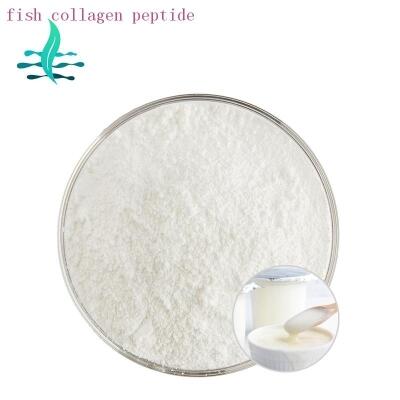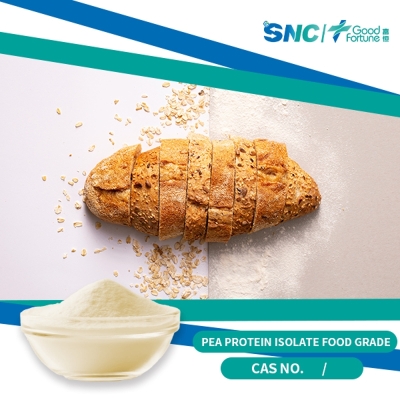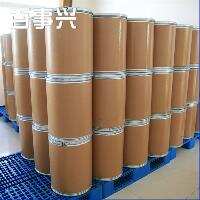Analysis and determination of amino acid additives
-
Last Update: 2020-07-03
-
Source: Internet
-
Author: User
Search more information of high quality chemicals, good prices and reliable suppliers, visit
www.echemi.com
Feed grade L-Lysine hydrochloride(i) Identification of1 reagent and solution triketone (Hg3-984-76): 0.1% (m/V) solution;2Operation steps Amino acid identification: called take sample 0.1 grams, dissolved in 100 ml of water, take this solution 5 ml, plus 1 ml of trienone solution, heating after three minutes, add water 20 ml, stand for 15 minutes, the solution is fuchsiaIdentification of chloride: called take sample 1 gram, dissolved in 100 ml of water, plus silver nitrate solution, that is, the production of white precipitationAdd dilute nitric acid, precipitation does not dissolve, take white precipitation, add an excessive amount of ammonia hydroxide solution, precipitation dissolves(ii) L-Lysine hydrochloride content determination
1Reagent and solution to trytolic acid (Hg3-1296-80); 6% (m/v) ice acetic acid solution; alpha-phenol-based methanol indicator: 0.2% ice acetic acid solution; perchloric acid (GB623-77): approximately 0.1 moles/litre standard solution of ice acetic acid2Operation step The sample is pre-drying to constant weight at 105 degrees C, weighing the dry sample 0.2 grams, said to be 0.0002 grams, plus 3 ml of metacid and 50 ml of ice acetic acid, and then added 5 ml of mercury acetic acid ice acetic acid solutionAdd 10 drops of alpha-phenol-based methanol indication, with 0.1 moles / elevated chloric acid standard solution titration, the specimen from orange yellow to yellow-green is the end pointUse the same method for another blank test to correct it3Results calculationC4H14N2O2 HCl (%) (0.09132 x C ( V1-V2))/m x 100 type C: concentration of the standard solution of perchloric acid, moles/l; V1: volume of the standard solution of per millichloric acid used in the sample, ml; V2: the volume of the standard solution of perchloric acid used in the blank test, the volume of the standard solution of perchloric acid, milliliters; m: sample quality, g; 0.09132: grams per millimole 2 The determination of dL-methine at the feed level (i) identify 1 reagent and solution Copper aqueous sulphuric acid: sulfate saturated solution; sodium hydroxide: 1 plus 5 aqueous solution; amino acetic acid: 1 plus 100 solution; sodium nitrate: 1 x 10 solution; hydrochloric acid (GB622-77): 1 plus 5 solution; 2 Operating procedure called take sample 25m g, plus 1 ml of aqueous copper sulfate full of sulfuric acid solution, showing yellow; Solution, 0.3 ml of sodium nitroferrinacid solution, and then fully oscillate mixed, at 35 to 40 degrees C for 10 minutes, cold for 2 minutes, add 10 ml of dilute hydrochloric acid solution, oscillation mix, solution is red color Called take the sample 1 gram, dissolved in 30 ml of water, take 1 ml of the test fluid, plus 1 ml of trienone solution and 100 mg of sodium acetate, heated to boiling, the solution is blue-purple (ii) the determination of methionine content
1 Reagent and solution potassium phosphate, potassium dihydrophosphate, potassium iodide, iodine: 0.05 moles/litre solution, soluble starch: 0.5% (m/v) solution; sodium sulphate: 0.1 mole/litre solution 2 Operating steps Called take 0.3 g (accurate to 0.0002 g) sample, put in a plug triangle bottle, add water 100 ml, hydrogen phosphate dipotassium 2 grams, phosphate dihydropotassium 2 grams, potassium iodide 2 grams, oscillating mixed dissolution, Accurately add 0.05 molar / liter iodine 50 ml, after the full oscillation mixture, placed after 30 minutes, with 1 ml of starch test liquid as an indicator, with 0.1 molar / liter sulfur sodium sulphate solution titration excess iodine, according to the same method for blank testing 0.1 moles/litre sodium sulphate solution per 1 ml - 7.460 mg C5H11NO2S 3 The calculation results C5H11NO2S (%) ( ( ( ( ( ( ( ( ( ( V1-V2)) / m x 100 type K: the number of milligrams per milliliter of sodium sulphate V1: the volume of sodium sulphate consumed by the sample, the volume of the m2; the volume of the V2: the volume of sodium sulphate consumed by the blank test, the volume of the m: the quality of the test sample, g Feed grade L-Lysine hydrochloride (i) Identification of 1 reagent and solution triketone (Hg3-984-76): 0.1% (m/V) solution; 2 Operation steps Amino acid identification: called take sample 0.1 grams, dissolved in 100 ml of water, take this solution 5 ml, plus 1 ml of trienone solution, heating after three minutes, add water 20 ml, stand for 15 minutes, the solution is fuchsia Identification of chloride: called take sample 1 gram, dissolved in 100 ml of water, plus silver nitrate solution, that is, the production of white precipitation Add dilute nitric acid, precipitation does not dissolve, take white precipitation, add an excessive amount of ammonia hydroxide solution, precipitation dissolves (ii) L-Lysine hydrochloride content determination
1 Reagent and solution to trytolic acid (Hg3-1296-80); 6% (m/v) ice acetic acid solution; alpha-phenol-based methanol indicator: 0.2% ice acetic acid solution; perchloric acid (GB623-77): approximately 0.1 moles/litre standard solution of ice acetic acid 2 Operation step The sample is pre-drying to constant weight at 105 degrees C, weighing the dry sample 0.2 grams, said to be 0.0002 grams, plus 3 ml of metacid and 50 ml of ice acetic acid, and then added 5 ml of mercury acetic acid ice acetic acid solution Add 10 drops of alpha-phenol-based methanol indication, with 0.1 moles / elevated chloric acid standard solution titration, the specimen from orange yellow to yellow-green is the end point Use the same method for another blank test to correct it 3 Results calculation C4H14N2O2 HCl (%) (0.09132 x C ( V1-V2))/m x 100 type C: concentration of the standard solution of perchloric acid, moles/l; V1: volume of the standard solution of per millichloric acid used in the sample, ml; V2: the volume of the standard solution of perchloric acid used in the blank test, the volume of the standard solution of perchloric acid, milliliters; m: sample quality, g; 0.09132: grams per millimole 2 The determination of dL-methine at the feed level (i) identify 1 reagent and solution Copper aqueous sulphuric acid: sulfate saturated solution; sodium hydroxide: 1 plus 5 aqueous solution; amino acetic acid: 1 plus 100 solution; sodium nitrate: 1 x 10 solution; hydrochloric acid (GB622-77): 1 plus 5 solution; 2 Operating procedure called take sample 25m g, plus 1 ml of aqueous copper sulfate full of sulfuric acid solution, showing yellow; Solution, 0.3 ml of sodium nitroferrinacid solution, and then fully oscillate mixed, at 35 to 40 degrees C for 10 minutes, cold for 2 minutes, add 10 ml of dilute hydrochloric acid solution, oscillation mix, solution is red color Called take the sample 1 gram, dissolved in 30 ml of water, take 1 ml of the test fluid, plus 1 ml of trienone solution and 100 mg of sodium acetate, heated to boiling, the solution is blue-purple (ii) the determination of methionine content
1 Reagent and solution potassium phosphate, potassium dihydrophosphate, potassium iodide, iodine: 0.05 moles/litre solution, soluble starch: 0.5% (m/v) solution; sodium sulphate: 0.1 mole/litre solution 2 Operating steps Called take 0.3 g (accurate to 0.0002 g) sample, put in a plug triangle bottle, add water 100 ml, hydrogen phosphate dipotassium 2 grams, phosphate dihydropotassium 2 grams, potassium iodide 2 grams, oscillating mixed dissolution, Accurately add 0.05 molar / liter iodine 50 ml, after the full oscillation mixture, placed after 30 minutes, with 1 ml of starch test liquid as an indicator, with 0.1 molar / liter sulfur sodium sulphate solution titration excess iodine, according to the same method for blank testing 0.1 moles/litre sodium sulphate solution per 1 ml - 7.460 mg C5H11NO2S 3 The calculation results C5H11NO2S (%) ( ( ( ( ( ( ( ( ( ( V1-V2)) / m x 100 type K: the number of milligrams per milliliter of sodium sulphate V1: the volume of sodium sulphate consumed by the sample, the volume of the m2; the volume of the V2: the volume of sodium sulphate consumed by the blank test, the volume of the m: the quality of the test sample, g (name)
This article is an English version of an article which is originally in the Chinese language on echemi.com and is provided for information purposes only.
This website makes no representation or warranty of any kind, either expressed or implied, as to the accuracy, completeness ownership or reliability of
the article or any translations thereof. If you have any concerns or complaints relating to the article, please send an email, providing a detailed
description of the concern or complaint, to
service@echemi.com. A staff member will contact you within 5 working days. Once verified, infringing content
will be removed immediately.







